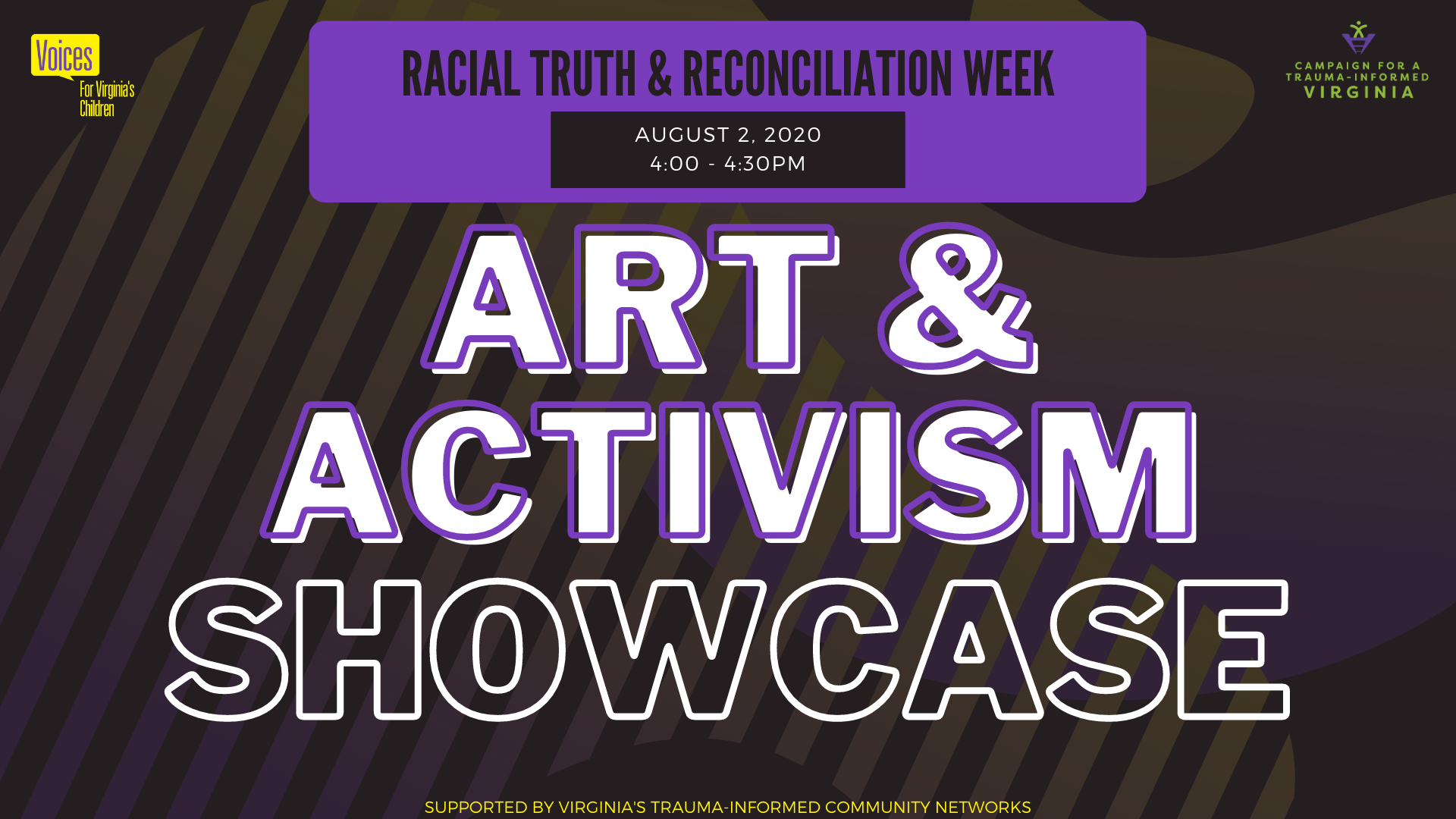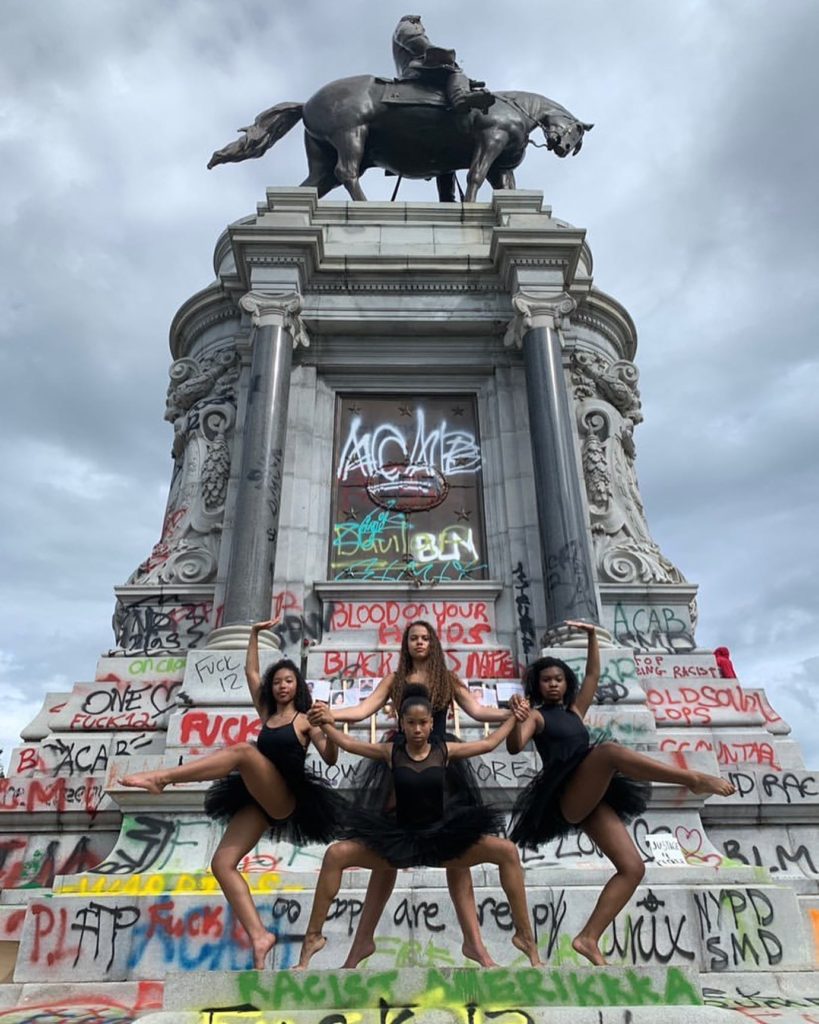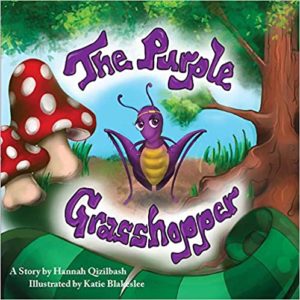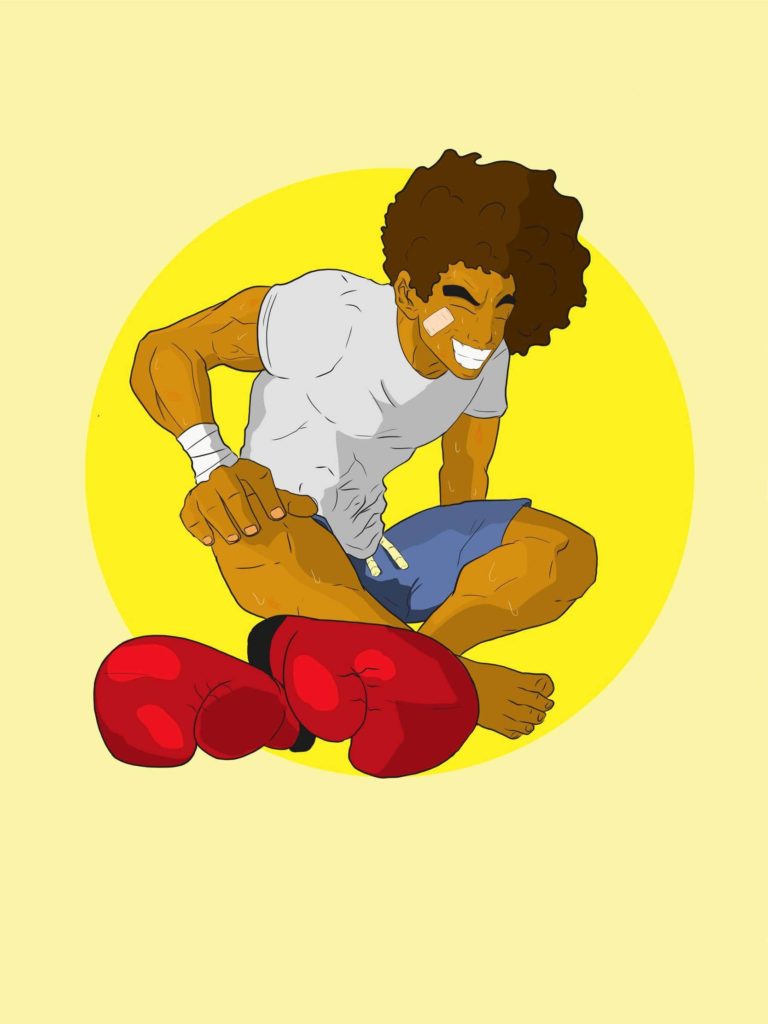

In addressing and promoting justice for oppressed communities, we recognize art as a form of resilience but also a form of social justice. In honor of Racial Truth & Reconciliation Week, we encouraged artists and advocates to submit pieces that address cultural, historical, and racial trauma in addition to pieces that highlight cultural resilience, truth, reconciliation, and justice. Please take a moment to view their truths and share their work.
On January 21, 2020, advocates from around the state joined us at the 2020 Campaign for a Trauma-Informed Virginia Advocacy Day! The goal of the Campaign is to advocate for state-level policy investments around trauma-informed care across child-serving systems. Over 40 partners endorsed the Campaign’s priorities this 2020 General Assembly Session. The advocacy day followed Martin Luther King Jr. Day. Artists helped advocates celebrate a resilient Virginia in showcasing work that met the themes peace and resiliency.
CEO of Girls for a Change (GFAC), Angela Patton, founded the organization as a first step to end the prejudice, poverty, and lack of resources that leave Black girls and young women vulnerable at the margins of society. Through GFAC programs, not only do girls create change by engaging in social change projects, but in the process, they learn problem-solving skills, as well as what it means to change policy and create movements. Their programs address institutional racism, sexism, the digital divide, and the glass ceiling, which for many Black girls can be a “concrete ceiling.” Girls for a Change take on complex societal issues long before their time, but they recognize the implications of oppression, even if they cannot put a name to it. Listen to the experiences of these youth through this piece.
Dawn Cherry created the piece, DAMAGED GIRL, which is a piece 15 years in the making. It embodies the theme of understanding adverse childhood experiences and growing beyond. The piece has poetry carved onto the body of DAMAGED GIRL. It tells the story of Dawn Cherry, a survivor of childhood sexual abuse. The poem goes from the trauma itself, giving a prayer of thanks, and detaching from the impact of trauma to reach healing. Listen more by viewing this video to hear the artist talk about the piece.
(left to right) Kennedy George, Shania Gordon, Ava Holloway, and Sophia Chambliss (back)
These local to Richmond brown ballerinas are igniting change in their communities! Their photoshoot at the Robert E. Monument went viral. Since then, they have been featured by celebrities, local and national media outlets. This photo was taken by photographer, Chris George. You can support them by purchasing their t-shirt here.

This book will be read in our Children’s Book Community Chat Series. Inspired by ballerinas Ava Holloway and Kennedy George, ‘My Ancestors’ Wildest Dreams’, is a tale about a chance encounter at the Robert E. Lee Monument in Richmond, Virginia, which catapulted these Black ballerinas into a summer of activism and dance. You can purchase a copy of this book here.
Ballerinas of Change are also featured in this music video!
This book will be read in our Children’s Book Community Chat Series! The Purple Grasshopper follows the journey of a quirky grasshopper who struggles with accepting that she is different. She tries to be like the other grasshoppers at first, but quickly learns the power of self-love and that friendship is abundant. Celebrating your uniqueness is not as difficult as it might seem! You can purchase a copy here.

she Dreams describes the vision that many communities of color share for an inclusive America. The author discusses dreams of equality where Black little girls and boys can be whatever they desire to be without the obstacles of oppression. This piece takes the reader through different depictions of the experiences of communities of color, including themes of internalized racism, colorism, police brutality, and more. Click the video to view the entire piece!
A rhetorical question is posed throughout the entirety of the piece, “Ask me why I’m angry.” This piece was written in 2016 after the murder of Eric Garner. It shares the emotions behind the constant retraumatizations that Black communities face after yet another death related to police brutality. Now, four years after the creation of this piece, it iterates years and years of trauma that has resurfaced as a result of the Black Lives Matter movement. Learn more by viewing this piece!
Metaphysics For White Privilege unpacks how the issues facing African American people in the US are largely ignored and shines a light on what privilege (and its antithesis) looks like in this country. Using the age old “If a tree falls in the forest” metaphor to introduce the idea of racism being an unseen theory for White Americans versus being an actual socio-economic and moral disease in America.
This piece speaks about the barriers that we put up based on religion, race, and culture and how we as a society seem to give the ones with these bias/viewpoints the largest platforms such as on the mainstream radio. The ones with genuine messages get silenced either thru not getting play on the airwaves, removed from books (some religious) or as extreme as being killed. The second half of the poem talks about how, in pockets, these barriers do not exists.. Thru the poet’s own experience, Eric has seen a different world where religion, race and culture mix, including where the poet grew up to a certain extent. The poet concludes with saying, “Figure out a way to tailor your message to mainstream society so the genuine messages can be heard.” This can be done with, as the poet says, a hook because it’s these “catchy things” that hook a mainstream audience.
It’s a poem about Alexus’s experience as a person with disabilities and how she moves through life. This piece is an expression of power, comfort, and joy of being whole in one’s body.
Kate Stark is an author and mother of four young children in Richmond, VA. Kate is on a mission to reach people (especially the youth of today) through music and education so we can create a better world that is free of hate. Kate partnered with Shawn Trapp (who also resides in Richmond) to write and produce the song SHINE THRU HATE which was written in reaction to and in support of the BLACK LIVES MATTER movement. It speaks to the subject of police brutality, but the song’s purpose is to encourage people, especially the youth of today, to “shine thru hate” and choose kindness whenever possible. On their website, you will find a list of links where you can support BLM. There is also a contact email address where one can send additional links to add to the list, as well as share stories of “How You Shine Thru Hate.”
Listen to the song Shine Thru Hate here.
“I can see just fine” reflects on the demographics of the small, central Pennsylvania town I grew up in, the whiteness that was my normal, and the journey of becoming responsible for my own learning regarding American History. At first glance you see a Snellen chart (eye chart) that would have been used in 1965. The year is significant because it represents the Voting Rights Act of 1965. When people see the large, capital “E” at the top their brain recognizes the common eye chart and dismisses the image as something already known. However, upon closer examination, the viewer notices the negative space creating the Snellen Chart is completely filled with letters, sentences. What does it say? How do you read it? The link provided will take you to my website. There you will see three images of my 20″x30″ pen and ink drawing, YouTube link showing a time-lapse of me creating the piece, and a 13 page pdf file of the full text used to fill the space around the familiar Snellen Chart. The work plays on assumptions we make based on what we think we know, but upon further examination, we’re faced with an opportunity to acknowledge and SEE what we’ve missed for so long. View the video below and also click this link to learn more about the piece!
These three poems were written by the author in reflection of the current events of police brutality and the resulting public unrest. They examine the intersections of race, sexuality, gender identity, class, and religion. Read them below!
We live
In a country where everyone who isn’t
Lily white
Male in the way they intended
Strictly heterosexual
Cisgender to the point that you don’t know what cisgender means
Able bodied
Neuro typical because you’re not a pansy
Christian because it’s the only way to be
And ####### loaded
Is oppressed in every way they could think of
And they wonder why we’re all depressed
They say we’re too soft
Really we’re too hard—not soft flesh like them
We’re too rock hard to be human
We take everything too seriously
We’re not supposed to want what they have
And they won’t give it to us
So we take
And when we take crumbs from their white 12 layer cake
They have security kick us out of the wedding because
We weren’t invited
Maybe next time
Maybe in 53 more years we can go inside and sit on the edge of the doormat
Where we can still feel the draft from outside
While they wait from the tall chair by the fireplace sipping black tea with wildflower honey.
“For we must Consider that we shall be as a City upon a Hill, the eyes of all people are upon us…” John Winthrop, Massachusetts Bay Colony, 1630
Don’t hide
We know that your smile never reaches your eyes
Even as your eyes watch from the shade of a red cap
Tell us what you actually mean when you say you can’t see the sky
It’s not a glass dome above you, but it’s there
You can reach your hands through it
Though it is real
But you can’t hear our fingernails scratch the surface
Tell us why you say the clouds aren’t real
Tell us where the rain actually comes from
For you know better than I
You stand on your porch and watch till your eyes are sun-bleached
What colors do you see?
If you say the US is a melting pot then I’ll assume you don’t know how to cook
If we were a melting pot we’d be like muenster cheese, roma tomatoes, sweet onion, peppers, spices and venison thrown in a pot together
Melting into each other
You could dip a chip in it and it would taste like freedom
But we’re like if you put everything in the pot and forgot to turn the slow cooker on and instead just let it sit there
Day after day
Not lifting a finger or seeing if you used too much tabasco
But letting it sit till it grows mold
The smell so sour that it sucks the oxygen out of your lungs
Then instead of throwing it out and starting over you finally plug in the crock pot
Hoping something will change
But now all you have is hot mold
And later that day you take your concoction to your neighbor’s potluck and force it down their kid’s throats
Somehow they manage to keep it down
And when they complain you instruct them to wash it down with diet cola from the gas station.
/napē/ explores the connotation of a noun and the uproar it’s caused within and outside of the black community. The poem derives from the experiences of a black woman, generational trauma, and reimagining of the trope /ɡo͝od/ hair. Subscribe to Ariel’s channel here.
Black people continue to fight for equality. This initiative began over 400 years ago but has progressed overtime. This plight is shared with other communities of color. These heroes continue to display their resilience as they still find ways to enjoy life and smile despite adversity’s obstacles. 
An African American woman, man, and non-binary person have their ears, mouth, and eyes covered respectively by anonymous Caucasian men. This piece, which I call Hear, Speak, See No Injustice, is mainly about how white supremacy and systemic racism, usually at the hands of Caucasian Americans, have kept the black community silent and under an oppressive thumb for centuries causing us to be conditioned to not speak up or even see the injustice we face daily. There are many layers to this piece that might not be seen at first glace, however. For example, the three African American people having varying levels of emotional burnout about the situation and the more burnout they have, the less fight they have to remove the hands covering their senses, also the reference to the hear, speak, see no evil monkeys is a nod at a derogatory remark that BIPOC face, and the SPEAK being more accentuated can mean a multitude of things that I’ll leave up for viewer interpretation.
Go back to the main page #RTRW2020 Page.
Read More Blog Posts